Nothing will send you into a confused panic more than lifting your toilet seat to find a bowl full of brown toilet water. You reach to flush because you think one of your kids must have forgotten, but it’s not even that.
So, what causes brown toilet water? Rusted pipes are the most common reason for brown water in your toilet. Other issues such as polluted municipal city water supply or even corroded wells can also turn toilet water brown.
Here’s a tabular view of causes & solution:
| Brown Toilet Water | Sign | Solution |
|---|---|---|
| An Unclean Toilet | Visible stains in toilet/toilet water bowl | Properly scrub/clean the toilet |
| Clogged Pipes | Other toilets in your home don’t have brown water | Use a plunger or get professional help |
| Rusty Pipes | Brown water in all faucets | Flush your pipes, Ask your neighbors if they’re also experiencing same thing, Get professional help |
| Corroded Well | Debris in water at bottom of cup, Yellow brown or red coloration, Thick & slimy water | Shock your well & Use a well filter system (Best well filter: Springwell Well Water System) |
| Excess Minerals/contaminant buildup | Water generally tastes metallic, Thick & slimy water | First, test your water. Try soaking your toilet bowl with white vinegar, Use a water filter system or get professional help. |
Why Is My Toilet Water Brown?
Here are 5 common reasons why your toilet water is brown:
1. An Unclean Toilet can Discolor the Water
Going days, weeks, or months without properly cleaning the toilet bowl can cause brown deposits and mold to grow. The solution here is pretty simple. Grab a toilet brush and a bathroom cleaner – or a toilet bowl solution – and start scrubbing away.
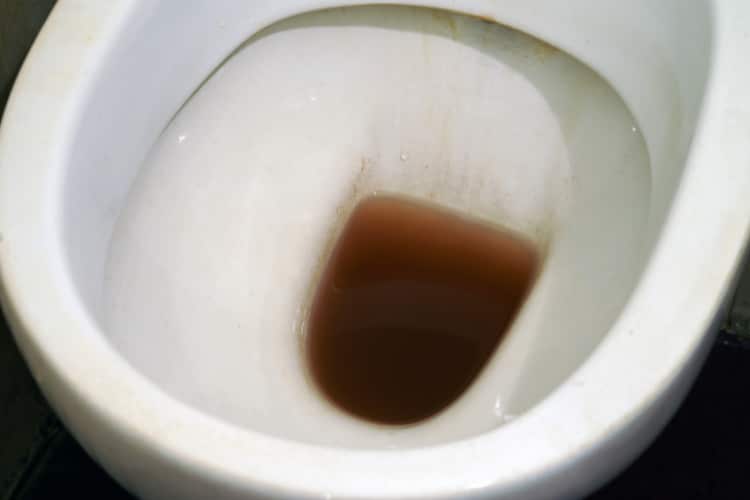
Make sure to get around the rim where the water flows into the bowl. If your toilet water goes from brown to pearly white, the problem is solved. According to a survey conducted by the Cleaning Institute, toilet cleaning is the no. 1 most disliked chore. However, it’s best to grit your teeth and clean your toilet on a regular basis.
2. Clogged Pipes can Cause Brown Toilet Water
A clog somewhere in your toilet’s pipe is another possible issue. Toilet paper, waste that’s especially difficult for water to break down, build-up of flushable wipes, and residues that accumulate over years are the common reasons for clogged pipes. As a result, you might have to deal with brown water.
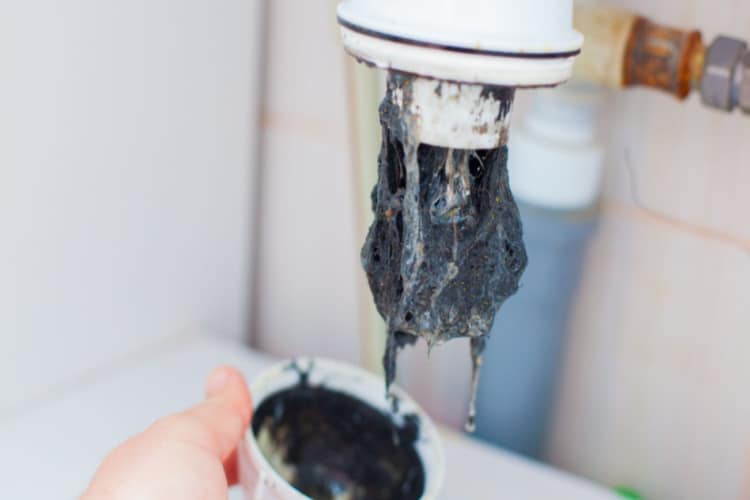
Don’t worry, though, determining whether a clogged pipe is causing the problem is quite easy. If other toilets in your home don’t have brown water, you can quickly eliminate clogged pipes as the cause.
However, if there are changes in water flow and pressure, if there’s a weird smell, and if draining takes too long, your pipes are likely clogged.
If clogged pipes are indeed the case, the issue needs to be dealt with quickly because the pressure in a water pipe can build to the point where it can cause a crack or break. Then, you’ll have more than just a brown toilet water problem.
More often than not, dealing with a clogged pipe will require the services of a professional plumber. They will probably run a snake (a thick, long, yet flexible wire that can just snake through every kind of drain and pipe) through your toilet pipe to remove the clog or locate the issue with a pipe camera.
However, if the clog is too close to your toilet, you might be able to just plunge it. Of course, there’s still a chance that you might need to call a plumber if the clog will not dislodge after several vigorous plunges.
3. Rusty Pipes is a Common Reason for Brown Toilet Water
Okay, the water in your toilet might be brown, but is it really only your toilet? What if brown water is coming from your bathroom faucet, showerhead, and kitchen sink as well?
In that case, rusty pipes, more specifically, the high levels of iron buildup in them, are easily one of the most common reasons behind this ordeal. However, identifying which pipes are rusty might be a bit difficult.
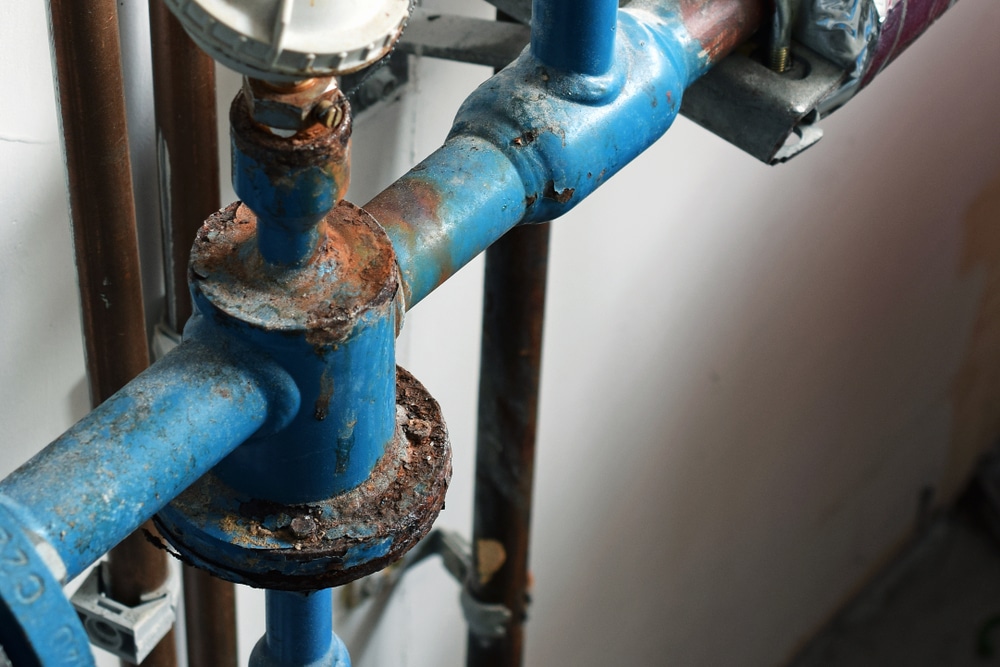
The first step is to consider the age of your house. Older buildings, especially those that were built before the 1960s, are more likely to use metal pipes such as copper, cast iron, and galvanized steel that are prone to rusting after decades of use.
Getting an idea of the age of a house’s plumbing is something you should ask before buying. Calling a plumber to look at things outside of the regular home inspection could save you more money in the long run.
So, what should you do if you find out rusty pipes are the issue? The simplest solution here is to flush your pipes. Do this by turning on cold water on several faucets inside your home and letting them run for 5 to 10 minutes.
If that doesn’t work, a call to the plumber is needed, and the solution will probably be an expensive one: changing the whole plumbing system.
Of course, the problematic pipes might not necessarily be the ones in your house. Instead, the rust might be stemming from the municipal city water supply system.
If you suspect that to be the case, you can see whether your neighbors are suffering from the same problem. Then, if there’s a neighborhood consensus about the source of the rust, contact the municipality water authority.
4. Corroded Wells can Affect the Water Color
If your water is supplied by a well, and if brown water is coming out of the toilet and all faucets in the house, the culprit may be rust or corrosion within that well. To test this, get a sample of water from the well and check for common signs of brown well water such as dust & sediment buildup or thick, slimy water.
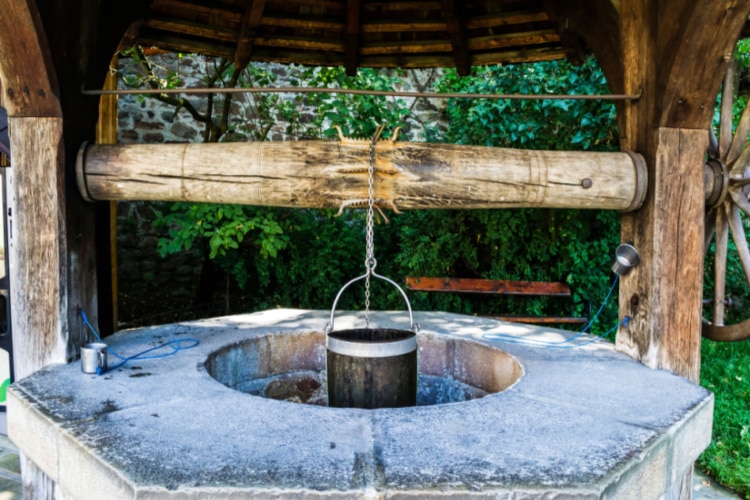
In the case of a compromised well, calling a water treatment specialist may be helpful. An even better solution is having the well tested to see if it’s in accordance with CDC (Centers for Disease Control and Prevention) regulations. The Environmental Protection Agency (EPA) estimates that 23 million homes in America are serviced by private and unregulated wells and those wells are left to be serviced and maintained by homeowners.
While there is no official government guidance on wells, the EPA provides several resources to help well owners keep their water safe for drinking and daily use.
The easiest solution here is treating and filtering your well water. Like pool water, well water needs to be treated since it’s collected from the groundwater supply, and one of the most common treatment options is chlorination.
In addition, subjecting the well to ultraviolet lights or to electronic radiation might help. All of these processes will remove particles that can cause water stains and rust to develop in your water supply, like iron. However, they may lead to other problems as well. Chlorination, for instance, might give the water a weird taste and odor, which will then require you to filter chlorine from water after chlorination treatment.
That treated water should then be run through a filter, specifically, one that is designed for well water such as the Springwell Well Water Filter.
5. Excess Minerals/Contaminants in the Water
The build-up of many minerals in water might also be the reason behind that brown, uncanny color.
The first potential culprit is again iron. Iron is not necessarily bad for your health, considering it’s a nutrient that helps move oxygen through your blood, but it can turn your water a brownish color with as little as 0.3mg detected.
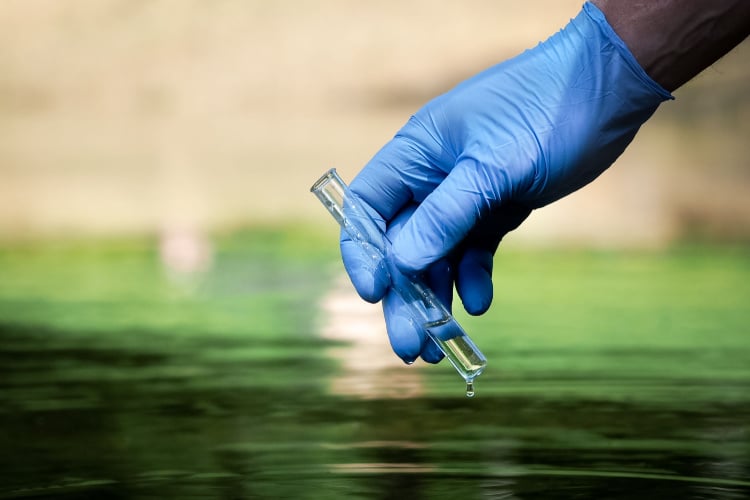
A higher level of iron in your water can also make it taste metallic and leave behind a brown, sticky slime inside the toilet tank and bowl. This residue can lead to bigger issues like clogged and corroded pipes if not quickly handled.
The next set of culprits are manganese and calcium. The combination of these two and oxygen can turn the water brown.
The first step in determining the level of minerals is to get a water testing kit, which can be be bought online. Perform the test to determine the different minerals/contaminants present in your water supply. Once the concentration of minerals is established, you can then draw out a plan to deal with them.
However, one way to easily handle this with at-home products is by using white vinegar. You can soak your toilet bowl, tank, and toilet parts with white vinegar overnight to break down mineral buildup.
Conclusion
The reasons for brown color water in your toilet vary wildly. Rusted or clogged pipes, a rusted or corroded well, or the over-presence of minerals in the water supply might all be responsible for this unpleasant occurrence.
Although a clogged pipe can sometimes be handled by a decent plunger, other causes often require water treatment solutions. A whole house water filtration system or chlorination might be the answer. There are also cases that might require you to change the whole plumbing (like rusted pipes) or the well (corroded well).
This blog post provides helpful tips on how to remove brown toilet water, a common issue that many homeowners face. The step-by-step instructions are easy to follow, making it accessible to anyone who wants to tackle this problem on their own. The post is well-researched and provides practical solutions that do not require expensive equipment or professional help. Overall, this is a great resource for anyone who wants to maintain a clean and healthy bathroom environment.
Both of our toilets have brown water but I don’t believe any other water in our home is brown…
Is it possible it is something to do with our tank? I know our toilet water comes from the tank, not sure if anything else does.
Otherwise, by reading your blog sounds like it could be a blockage… how would I know the cause?
Hi Shelly, interesting question. If it’s both of your toilets and nowhere else in the house, it does limit the possibilities. For example, one thought is that the fixtures/materials/plumbing in both toilets may be the same age and they’re rusting or otherwise contributing to the brown water. Are the faucets in these bathrooms also experiencing brown water or just the toilets themselves?